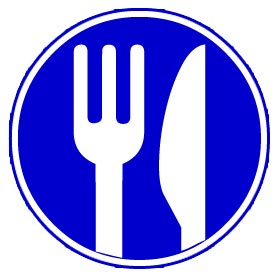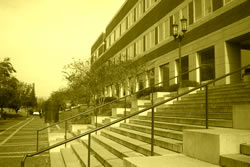|
(section 091)
September 15th: Theories of Design
Announcements
- Constitution Day Discussion on Immigration
Thu., 9/16
from 9:30 am - 11:00 am
McKnight Hall in the Cone Center
- Killing Us Softly 4 (Documentary screening)
Tues., 9/21
@ 7:00 pm
Student Union Movie Theater
- IFest: International Festival (this is quite a good time)
Sat., 9/25 from from 10:00 am - 6:00 pm
- UFC 119 Sat., 9/25 @ 10:00 pm
- Bob Dylan
UNC Charlotte's Halton Arena
Thu., 10/14 @ 8:00 pm
Turn in Your Business Cards and Letterheads
We have some design theories to go over, so please turn in your documents now, so you don't lose participation points for working on your assignments when you should be engaged in the conversation. Also, don't forget to turn in your memos with the documents.
Plan for the Day
We've got a few things to do today, so below is a list:
We will go over Chapter 4 in Document Design and Chapter 4 in the Non-Design's Design Book.
Theory
There's quite a bit to say, so let's assess what we have time to discuss. Check out the page I have devoted to theory.
As a preview, though, re-read the first page of Ch. 3 that claims theory attempts to explain "fundamental principles of human experience" (p.38). For our discussions, I want us to try to move beyond our immediate personal assumptions and be critical thinkers. Of course, there will be a multitude of interpretations for visuals, but we can find commonalities. Claiming that an interpretation depends on the "eye of the beholder" is accurate, but not looking beyond individual perspectives ignores prevailing attitudes that establish cultural generalizations. As designers, you have to "speak to me in a language I can hear" (Smashing Pumpkins), and that means following rules, conventions, and practices to meet audience expectations or just communicate effectively with audiences.
Visual Perception
I know it seems silly, but we actually perceive things based on light reflection and responses to visual stimuli. What we see is based on how our brains (through stimuli received by our eyes) interpret patterns of light. We distinguish colors, patterns, and entire objects through perceptions of light. While we could get very complicated in our discussions from biological perspectives, we won't go that far. Let's concentrate on what our textbook brought up.
Some topics for us:
- Gestalt--Grouping
- Figure-ground contrast
- camouflage
- distinct, much contrast
- Constructivism--fragmentary visuals
- Ecological Perception--direct perception (p. 49)
- When/Is this even possible?
- Closeness
- Business/clutter/noise
- Recall...less valid
- Combining the above theories
Visual Culture
Being the cultural, social creatures that we are, much of our visual world is shaped by our experiences. I know some don't like to hear this, but we are rarely able to free ourselves from the cultures into which we're born. Even the choices you think you have are simply choices on a cultural menu, a group that's socially constructed.
A former professor of mine told our class that people hate being told that their culture is based on societal constructions and has no connection to absolute truth: (paraphrased from memory) "cultural pride deals in absolute value or worth—they don’t want to hear it’s contextual" (Thomas Van, 9/16/2003).
But there's good news about cultural constructions and perceptions. Because members of a culture share commons backgrounds and ideologies, designers can tap into that shared knowledge. You might not be conscious of it, but, when you use idioms, refer to Seinfeld episodes, and use language, you're engaging in socially constructive activities.
Some topics for us:
- Visual cues
- Language conventions (visual language)
- Intercultural Communication
- Semiotics: how meaning is constructed or understood; signs and symbols for objects in the referential world.
- icon: signs that look like the thing they signify; a representational item.
- index: indication; signs that have a clear connection to whatever they signify. Of course, most of us call the computer signs "icons"..."index" means something specific to programmers.
- symbol: signs with an arbitrary relationship (but intersubjective agreement most likely) to whatever the signify.
- philosophy note: if this were a philosophy class, we might debate whether or not all icons and indexes were actually just symbols--arbitrary signifiers agreed upon by communities.
- Language and hegemony...anyone have a word suggestion?
- Ethics or "Why so many American flags in advertisements?"
Visual Rhetoric
Ok, I know what you're thinking: Isn't rhetoric just BS...empty political speech? While empty political speech is a definition of rhetoric, it's too reductive a definition for enlightened college students such as yourselves. Rhetoric is much more involved than the unfortunate popular definition. For this class (and others) you should have a broader view of rhetoric. I like to define rhetoric as "what builds meaning into something." That something can be an object, belief, event, or system, but, whatever it is, meaning is attached personally and culturally.
Take the following words for example: Communism and Feminism. Both have denotations and connotations. The denotative definitions (from the dictionary) are below.
- Communism: an economic system based on total equality and ownership of the means of production.
- Feminism: a philosophy recognizing and attempting to change women's subordinate status in patriarchal society; a philosophy promoting the equality of all people.
Connotations are the feelings, allusions, and values a group (such as a culture) associates with certain words. Likewise, conscious and unconscious rhetoric describes what gives messages (even visual ones) their meaning--explicitly and implicitly.
Some topics for us:
- Ethos: presentation of one's character or credibility.
- Pathos: appeal to emotions; evoking emotional responses.
- Logos: appeals to logic or facts in a message.
- Kenneth Burke's pentad:
- Act-what is going on in a visual?
- Scene-where is the visual's action taking place? What's the location?
- Agent-who or what is carrying out an action?
- Agency-how, by what means, is an act completed?
- Purpose-why is the act being done?
- User-Centered Design:
- Learnability-can a user figure it out?
- Efficiency-can a user get through the document quickly and accurately?
- Memorability-do users become habituated to the document's use?
- Error avoidance-can users avoid errors with the document?
- Subjective satisfaction-does the document fulfill the users needs (for the object, system or device being explained)?
- Usability testing...I know an excellent class for this subject! For now, though, just understand the importance of putting yourself into the shoes of a user, but recognize that you can't know EVERYTHING about your audiences.
Has anyone seen Super Size Me? Kids say the darndest things!
We All Love Visuals
In case I didn't show these already, let's take a look at a video and other visuals to help us think about Visual Perception, Visual Culture, and Visual Rhetoric.
Ever wondered why video of TVs and computer monitors have a scrolling line?
What hegemonic principles are at work in these images?
What are the rhetorical attributes of the following images?
In groups of 2, find an image and discuss its meaning in terms of culture or rhetoric. I realize that culturally defined meaning falls under "rhetoric," but, for tonight, try to separate the two.
For instance, culturally, what can be said about this image:

In American culture, we generally eat using these utensils. In fact, it's so common to think of a meal needing to be consumed using forks and knives, that the above is an index (but could be an icon for forks and knives) that refers to a place to eat--most likely a restaurant.
Rhetorically, though, this "sign" follows the above described convention of eating with a fork and knife, but that doesn't immediately bring to mind persuasion. However, if the above sign were used by, say, a reviewer to point out favorable/popular restaurants, then we would claim the sign is an appeal to ethos because some critic established (and audiences agree) that the sign refers to, an his/her expert opinion, good places to eat. Consider stars for rating the quality of a place (e.g., a 5-star restaurant is quite posh).
Now, as you're driving down the highway (with your cell phone turned off), you may come to a blue sign with various smaller signs that refer to specific places (i.e., restaurants, gas stations, lodging, and attractions) usually with miles noted. I would say these are icons, but, considering the book's example of the restroom sign--possibly pointing to an actual restroom--being an index, I guess the restaurant images are also indexes. If you want to think further on this, check out this link. Basically, know your audience. A lay audience with no knowledge of Saussure or Peirce isn't going to scoff at you equating icons with indexes.
Chapter 3: Alignment
I know you all read Ch. 3 in The Non-Design's Design Book, so let's talk about that a bit. Thinking about our discussion above, what can we say about visual perception, visual culture, and visual rhetoric with regard to the chapter's guidelines?
Midterm Preview
Can you believe it's just one week before the
midterm exam? Unbelievable. Well, you have nothing to fear if
you've been coming to class and reading. The midterm will focus
mainly on the Document Design (Ch. 1-3) textbook, but
there will be material from The Non-Designer's Design Book
(Ch. 1-3). The exam's format will be multiple choice, fill-in-the-blank,
and short answer.
As mentioned in the e-mail
you aren't responsible for Chapter 4 in either book.
After the Midterm
Readings
Read Chapter 4 in Document Design
and Chapter 4 in The Non-Designer's Design Book before
coming to class in two weeks week (9/29).
We're going to try to focus more
on nuts and bolts in that class, so I want you to bring in or
find links to whole documents that you feel are either effective
or ineffective. We'll discuss them in groups, so don't forget. |
